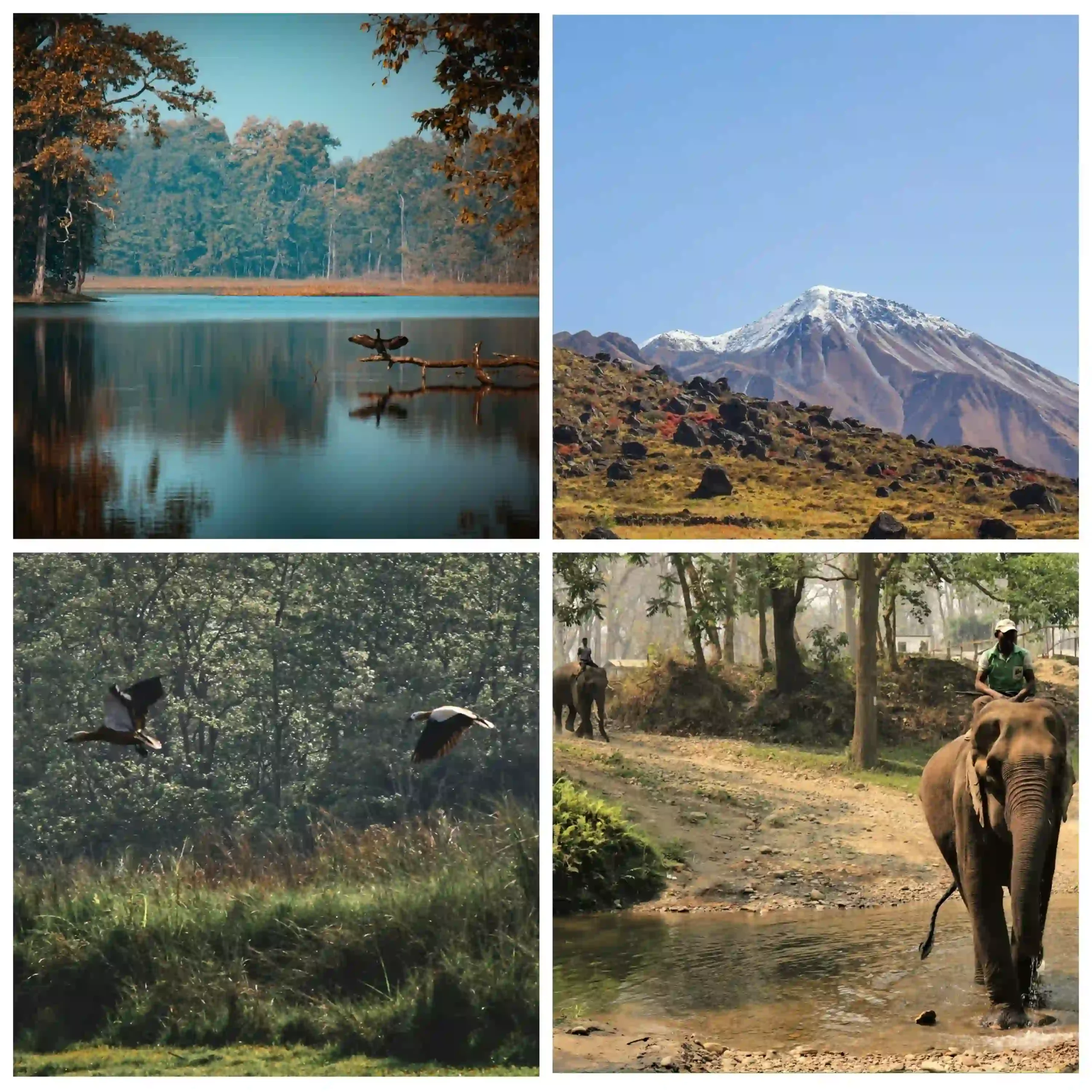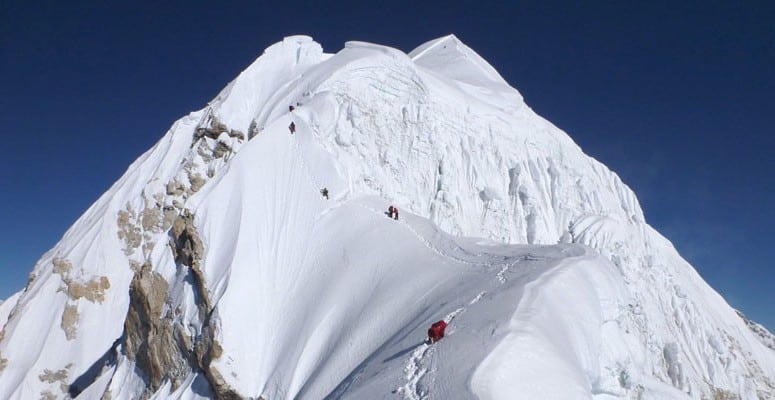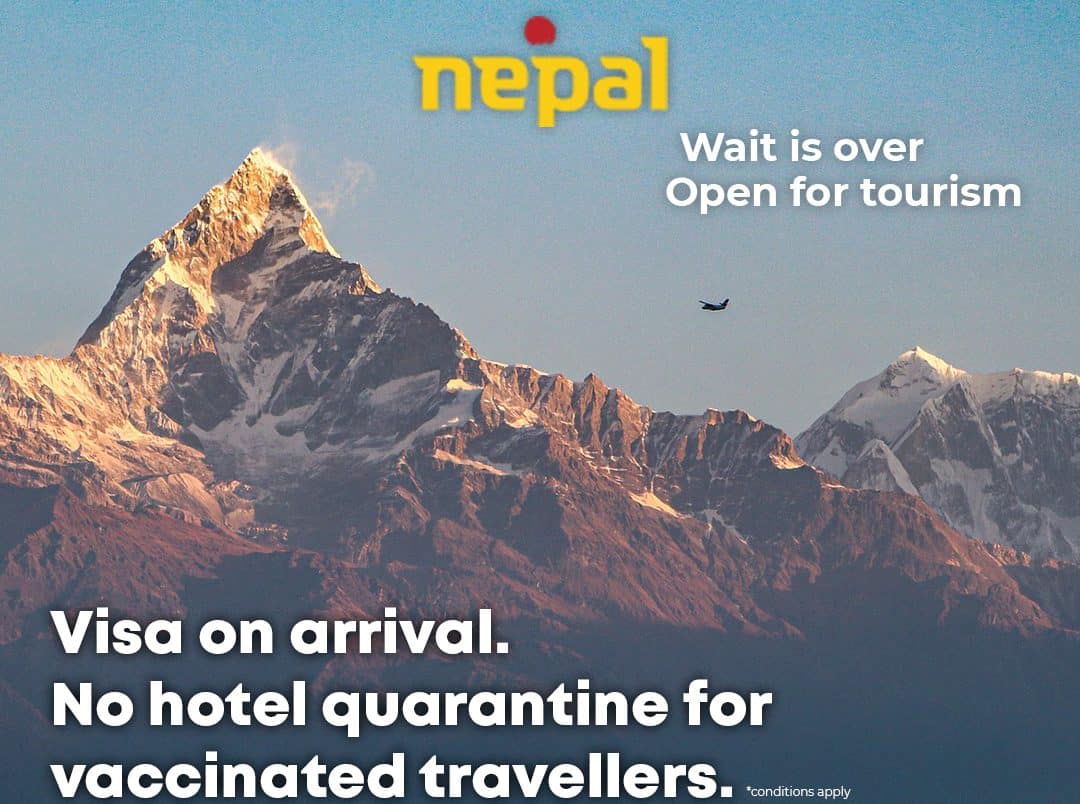Contents
Introduction
We are sure that anyone who has done prior adventures in Nepal will mention trekking. Especially, most of the people who do trekking have done it in popular regions like Annapurna, Langtang, Manaslu, and Everest region. As most people are focused on this activity just to see mountains, they may be missing other areas to visit in this country. Yes, here instead of talking about trekking in the mountainous regions, we will further talk about the national parks of Nepal.
As the trekking regions could include multiple national parks, it’s not that they can’t enjoy the features of national parks. But there is a lot of difference when you specifically visit the national park without adding any extra adventure like trekking in it. Hence, know that the National parks of Nepal are the Gems of the country that are very important to tourism and display their uniqueness in a whole different way to travelers.
National parks are basically conserved areas that are controlled by the government to save different varieties of flora and fauna. Simply, these are the natural habitats that smoothly ensure the natural ecosystem. Now, as we have given a short explanation of the national park, we will talk about the amazing national parks of Nepal. If you are confused about which one to visit in the future then this blog post is definitely for you. So keep patience and check out the Top 8 national parks of Nepal-
1. Chitwan National Park
Located in the lowlands of southern Nepal, Chitwan National Park reigns as a haven for wildlife enthusiasts. Renowned for its dense jungles and wide grassy plains, Chitwan is a UNESCO World Heritage Site and home to various flora and fauna.
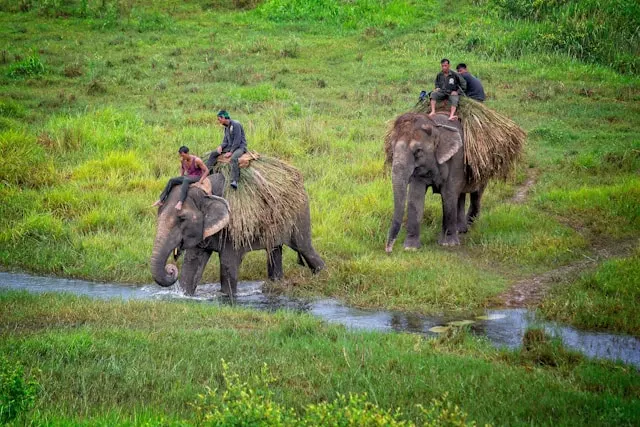
Here, visitors can join on thrilling jungle safaris to spot endangered species such as the Bengal tiger, one-horned rhinoceros, and Asian elephant. The park is also a paradise for birdwatchers, with over 500 species of birds recorded within its boundaries. As you travel across the Rapti River and explore the park’s green forests, you will be immersed in the wonders of Nepal’s rich biodiversity. Here, you will get the opportunity to do adventures like elephant back rides, canoeing, jeep excursions, etc.
2. Sagarmatha National Park
Into the heart of the Himalayas, you will find yourselves in Sagarmatha National Park, home to the world’s highest peak, Mount Everest. Located in the Khumbu region of eastern Nepal, this iconic park has a vast expanse of rugged terrain, including snow-capped mountains, deep valleys, and glaciers. In addition to being an escape for trekkers trying to reach the base camp of Everest, Sagarmatha is also recognized as a UNESCO World Heritage Site thanks to its distinctive alpine ecosystems.
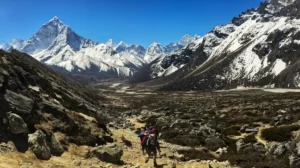
In these pure forests of juniper and rhododendron, uncommon species like the snow leopard, red panda, and Himalayan tahr graze freely. As you go through the park’s breathtaking landscapes, you will be amazed by the sheer beauty of the Himalayas and the resilience of its wildlife.
3. Rara National Park
We travel west and reach Rara National Park, a secret gem hidden away in western Nepal’s remote wilderness. Here in the middle of this national park, you will find the Rara Lake, which is Nepal’s largest lake and a shimmering haven of peace.
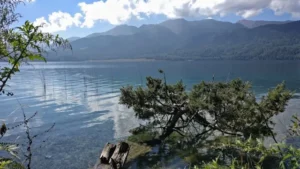
Surrounded by dense forests of pine, spruce, and juniper, Rara is a sanctuary for a diverse array of wildlife, including musk deer, Himalayan black bear, and colorful migratory birds. Walking along the peaceful lakeshore, we are sure that you will experience a sense of peace and amazing beauty that is completely different from the busyness of everyday life.
4. Makalu Barun National Park
Makalu Barun National Park is a biodiversity-rich wilderness paradise situated in the eastern part of Nepal. Surrounded by the towering summits of Makalu, the world’s fifth-highest peak, this protected region serves as an escape for nature enthusiasts and daring trekkers. Makalu Barun is home to a stunning array of flora and fauna, including rare species such as the rare snow leopard, red panda, and Himalayan wolf.
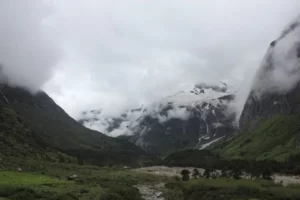
As we go over the rocky terrain of the park, we are rewarded with amazing views of snow-capped peaks, pure alpine meadows, and rushing waterfalls. Specifically within this national park, you will be charged for the use of the shelter, fuel, and other camping necessities. But just like in other national parks of Nepal, a guide is required to enter this one.
5. Langtang National Park
Nearby Kathmandu, Langtang National Park is a peaceful sanctuary that provides an overview of Nepal’s mountain culture and the persistent nature of its wildlife. Even though Langtang is close to Kathmandu, the country’s busy city, it is still a pure wilderness with dense forests, alpine meadows, and majestic peaks. Furthermore, the park is home to the endangered red panda, the elusive Himalayan black bear, and the vibrant Himalayan thar.
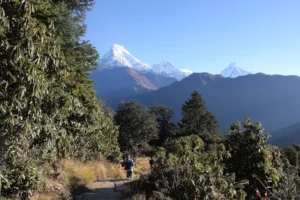
While trekking through the peaceful valleys and charming villages of Langtang, we experience the friendly hospitality of the Tamang and Sherpa populations, whose customs have a close connection with the environment. We become more aware of the delicate beauty of Nepal’s high-altitude ecosystems as we take in the vast vistas and the clean mountain air.
6. Khaptad National Park
The far western regions of Nepal, home to the beautiful nature and serene spiritual surroundings of Khaptad National Park, are where all of the adventurers want to be. Famous for its lush meadows, flowing waterfalls, and old Hindu shrines, this isolated park has the name of Khaptad Baba, after the saint.
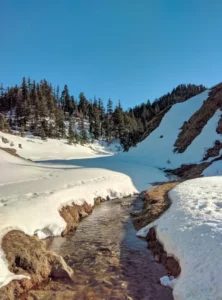
Adventurers can have peaceful walks through thick oak, rhododendron, and chir pine forests here, where they may come across endangered species like the Himalayan monal and pheasant-tailed jacana. The deep bond between spirituality and nature that is at the core of Nepal’s cultural legacy is brought to mind as we take in the peaceful atmosphere of Khaptad’s sacred landscapes.
7. Bardia National Park
Situated in the western Terai region, Bardia National Park contributes to the diversity of Nepal’s national parks. Large tracts of grasslands, thick sal woods, and twisting rivers characterize this unspoiled wilderness, which serves as a habitat for a diverse range of animals.
Bardia is one of the best places in Nepal to observe the endangered Bengal tiger, as well as other iconic species such as the one-horned rhinoceros, Asian elephant, and Gangetic dolphin. While visiting Bardia, you will indulge in the natural delights of this pure environment by going on thrilling jungle safaris, nature walks, and birdwatching excursions
8. Shuklaphanta National Park
Situated in the western Terai area of Nepal, ShuklaPhanta National Park provides an insight into the distinct environment of the country’s lowlands. Numerous species of animals find home here. Such animals reside in the expansive grasslands, deep forests, and quiet marshes, including the critically endangered swamp deer, also referred to as barasingha in the local language.
Similarly to the above national parks, you may explore this national park on foot or by jeep safari, looking for signs of the elusive leopard, the magnificent Bengal tiger, and the diverse array of birds that call this pure wilderness home. Also, you could find a variety of wildlife like – Rhinos, Elephants, leopards, Gharial wild board, etc. Here you can do adventure activities like birdwatching, jungle safari, and jungle walking just like in other national parks.
Conclusion
National parks of Nepal offer a rainbow of natural treasures just waiting to be discovered, from the deep jungles of Chitwan to the high peaks of Sagarmatha. Moreover, visiting Nepal’s national parks allows you to get a taste of the rich natural history of the nation and makes you think how such a small place can have so many natural wonders.
Know that these national parks are more than just protected spaces, they are thriving ecosystems that act as secure refuges for a wide variety of species and people who love the outdoors. With the encouragement and support of the government for eco-friendly tourism and community-based conservation initiatives, it is ensured that Nepal’s national parks remain virgin hotspots of biodiversity for a very long time. Therefore, there is something for everyone in the national parks of Nepal, whether it be adventure, peace, or just a chance to connect with nature.

